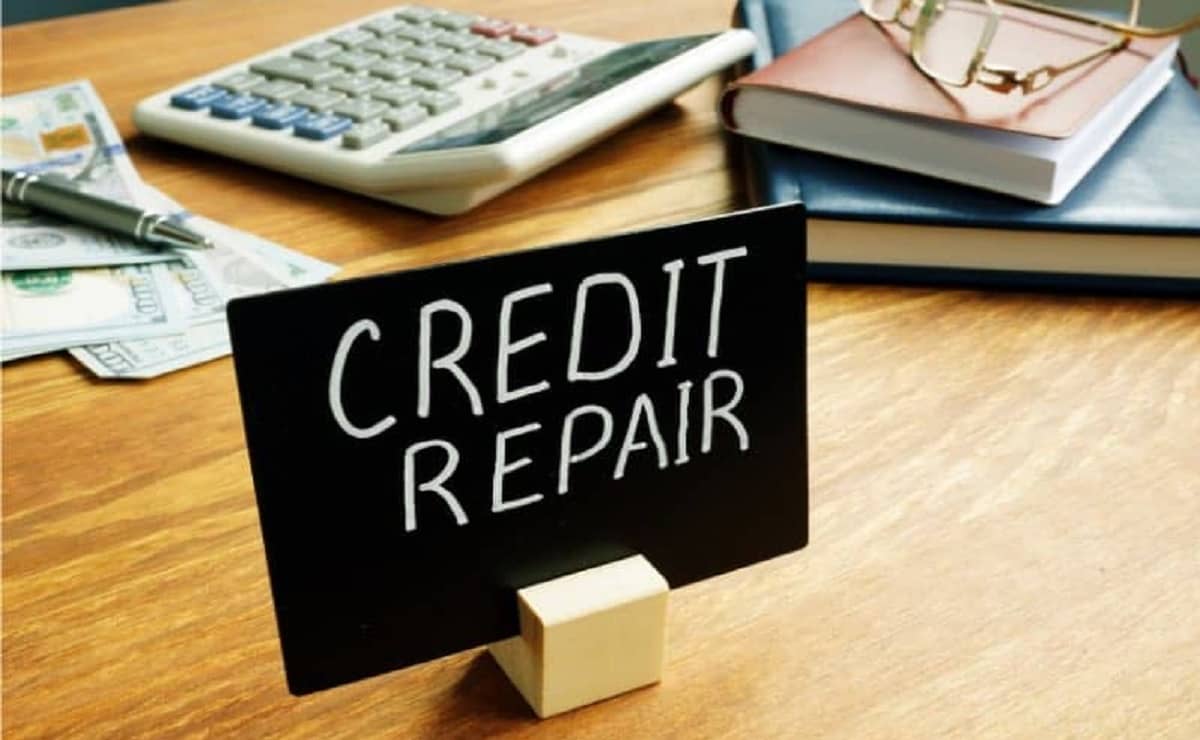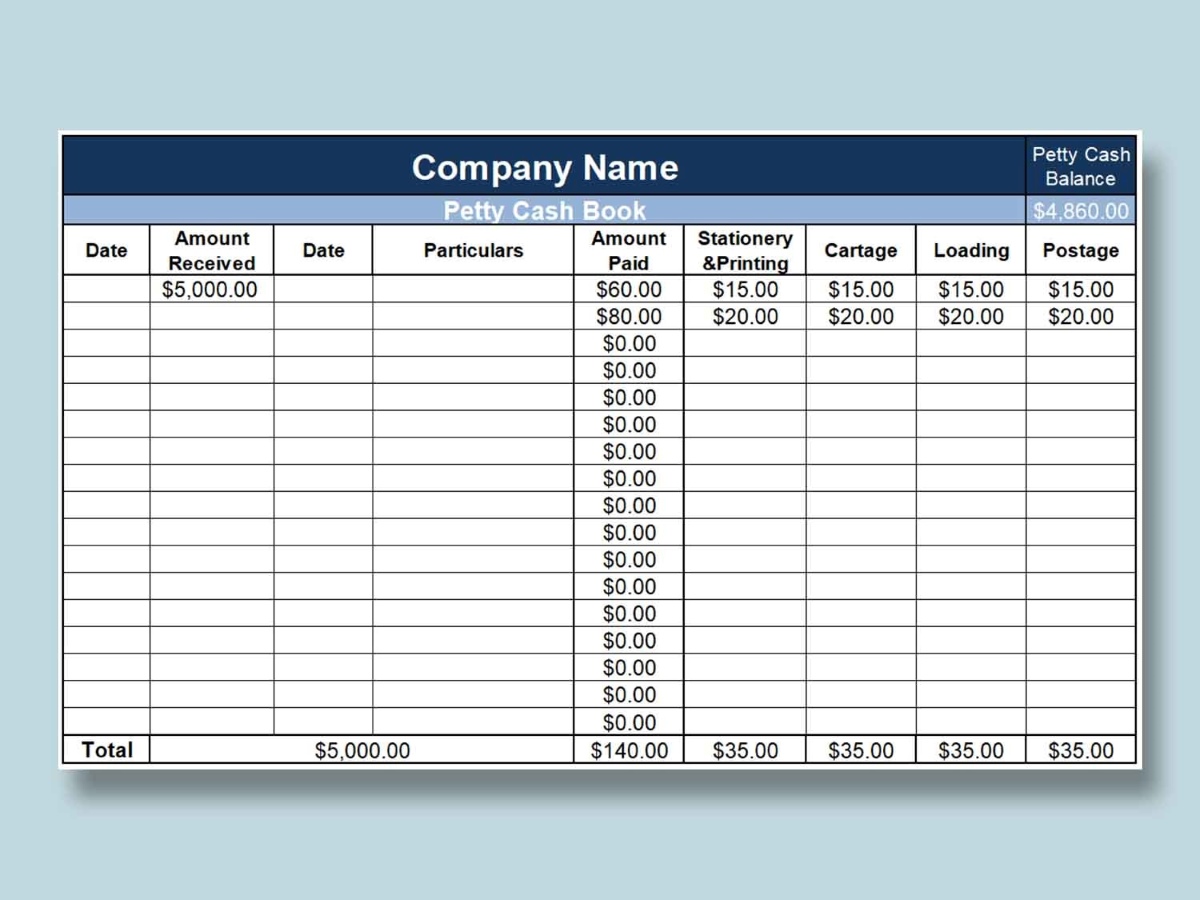

Finance
How To Start A Credit Repair Company
Published: October 23, 2023
Learn how to start a credit repair company in the finance industry and boost your clients' credit scores.
(Many of the links in this article redirect to a specific reviewed product. Your purchase of these products through affiliate links helps to generate commission for LiveWell, at no extra cost. Learn more)
Table of Contents
- Introduction
- Step 1: Understand the Credit Repair Industry
- Step 2: Research and Define Your Target Market
- Step 3: Develop a Business Plan
- Step 4: Legally Establish Your Credit Repair Company
- Step 5: Set Up Your Office and Obtain Necessary Equipment
- Step 6: Hire and Train Staff Members
- Step 7: Implement Effective Credit Repair Strategies
- Step 8: Market and Promote Your Credit Repair Services
- Step 9: Build Relationships with Credit Bureaus and Creditors
- Step 10: Track Progress and Continuously Improve Your Services
- Conclusion
Introduction
Welcome to the world of credit repair! As financial consciousness continues to grow, more and more individuals are realizing the importance of maintaining a good credit score. A good credit score not only opens doors to financial opportunities, such as obtaining loans and credit cards with favorable terms, but it also plays a vital role in other aspects of life, such as renting an apartment or getting a job.
Given the significance of credit scores, it is no surprise that the demand for credit repair services is on the rise. If you have a deep understanding of finance and a passion for helping others, starting a credit repair company can be a fulfilling and lucrative endeavor.
In this article, I will guide you through the essential steps to start your own credit repair company. From understanding the industry to establishing a legal entity, and from building a team to implementing effective credit repair strategies, we will cover it all. So, let’s dive in!
Step 1: Understand the Credit Repair Industry
Before diving into the world of credit repair, it is essential to have a deep understanding of the industry. Credit repair involves helping individuals improve their credit scores by identifying and resolving errors or negative items on their credit reports. It is important to note that credit repair is not about removing accurate information or magically boosting credit scores overnight. Instead, it is about advocating for consumers and ensuring that their credit reports are accurate and reflecting their current financial situation.
To effectively navigate the credit repair industry, it is crucial to stay updated on relevant laws and regulations, such as the Fair Credit Reporting Act (FCRA) and the Credit Repair Organizations Act (CROA). Familiarize yourself with the rights of consumers and the responsibilities and limitations of credit repair companies.
Additionally, take the time to research and learn about the credit reporting system. Understand how credit bureaus collect and maintain credit information, how credit scores are calculated, and the factors that impact creditworthiness. This knowledge will empower you to better assist your clients and provide them with accurate and actionable advice.
Stay abreast of industry trends and best practices by joining professional organizations and attending conferences or seminars. Engage with other professionals in the credit repair industry through networking events or online communities. Building a strong network can provide you with valuable insights and collaborations, enhance your credibility, and help you stay ahead of industry changes.
Lastly, it is crucial to possess excellent communication and negotiation skills. You will be interacting with clients, credit bureaus, and creditors on a regular basis. Effective communication and negotiation skills will enable you to advocate for your clients, navigate potential challenges, and build trust and rapport with stakeholders.
By understanding the credit repair industry and keeping yourself updated, you will lay a solid foundation for your credit repair company and position yourself as a knowledgeable and trustworthy expert.
Step 2: Research and Define Your Target Market
Now that you have a solid understanding of the credit repair industry, it’s time to research and define your target market. Identifying your ideal client base will help you tailor your services and marketing strategies to effectively reach and serve them.
Start by conducting market research to gain insights into the demographics, behaviors, and needs of individuals who may require credit repair services. Look into factors such as age, income level, geographic location, employment status, and credit-related challenges they might be facing.
Consider partnering with credit counseling agencies, mortgage brokers, real estate agents, or other professionals in the financial industry who can refer clients to you. Establishing these partnerships can help you access a consistent stream of potential clients and build credibility in the industry.
Once you have gathered enough information, narrow down your target market and create buyer personas. These personas should represent the characteristics and needs of your ideal clients. Develop a deep understanding of their pain points, goals, and motivations related to credit repair.
For example, your target market might include young adults who are just starting to build their credit history, individuals who have experienced a financial setback and need assistance rebuilding their credit, or entrepreneurs looking to establish business credit. Each group will have unique needs and require tailored strategies.
In addition to demographics, consider psychographic factors such as attitudes, values, and interests. This will help you understand how to effectively communicate and connect with your target market.
Once you have identified your target market and buyer personas, use this information to inform your marketing strategies. Develop compelling messaging and content that resonates with your ideal clients. Utilize social media platforms, create educational blog posts, and offer free resources to establish yourself as a trusted authority in the industry.
Remember, it’s essential to regularly revisit and update your target market as your business grows and evolves. Continuously evaluating and refining your target market will ensure that you stay relevant and able to meet the needs of your clients.
Step 3: Develop a Business Plan
Once you have a clear understanding of the credit repair industry and have defined your target market, it’s time to develop a comprehensive business plan. Creating a solid business plan will serve as a roadmap for your credit repair company, outlining your goals, strategies, and financial projections.
Start by defining your company’s mission and vision. What is the purpose of your credit repair business? What do you hope to achieve? Having a clear mission and vision will guide your decision-making process and help you stay focused on your goals.
Next, outline your business objectives and set measurable goals. Examples of goals might include acquiring a certain number of clients within a specific timeframe, achieving a certain revenue milestone, or expanding your service offerings.
Conduct a thorough analysis of your market, including potential competition and your unique value proposition. Identify what sets your credit repair company apart from others and how you will position yourself in the market.
Develop a marketing and sales strategy to reach your target market and attract clients. This may include online marketing tactics such as search engine optimization (SEO), social media advertising, content marketing, and strategic partnerships with other professionals in the financial industry.
Outline your operational processes and procedures. This includes how you will handle client onboarding, credit report analysis, dispute resolution, and tracking progress. Creating efficient and streamlined processes will help your business run smoothly and ensure excellent service delivery to your clients.
Create a financial plan that includes startup costs, projected cash flow, and revenue projections. It is crucial to accurately estimate your expenses, including legal and licensing fees, marketing expenses, office space, technology tools, employee salaries, and any other costs associated with running your credit repair business.
Consider seeking advice from a financial professional or consulting an accountant to ensure that your financial projections are realistic and aligned with industry standards.
Lastly, regularly review and update your business plan as your credit repair company grows and adapts to changes in the industry. This will help you stay on track and make informed decisions to achieve your goals.
A well-developed business plan will serve as a blueprint for your credit repair company, helping you navigate challenges, attract investors or lenders, and ultimately succeed in the industry.
Step 4: Legally Establish Your Credit Repair Company
As you move forward with your credit repair business, it is crucial to legally establish your company to ensure compliance with laws and regulations. Here are some important steps to take when establishing your credit repair company:
1. Choose a legal structure: Decide on the legal structure of your business, whether it’s a sole proprietorship, partnership, limited liability company (LLC), or corporation. Each structure has its own advantages and considerations, so it’s important to consult with a lawyer or accountant to determine the best option for your specific circumstances.
2. Register your business: Register your credit repair company with the appropriate government agencies, such as the Secretary of State’s office or local business licensing authorities. This step will vary depending on your location and legal structure.
3. Obtain necessary licenses and permits: Research and obtain the necessary licenses and permits required to operate a credit repair business in your jurisdiction. These may include a credit services organization (CSO) license or a Credit Repair Organization (CRO) registration, depending on the laws of your state or country.
4. Comply with legal requirements: Familiarize yourself with the laws and regulations governing credit repair services, such as the Credit Repair Organizations Act (CROA) in the United States. Understand the rules regarding contracts, disclosures, fee structures, and client rights. It’s crucial to adhere to these laws to protect your clients and maintain your business’s integrity.
5. Obtain insurance coverage: Consider obtaining insurance coverage, such as professional liability insurance or bonding, to protect your business and clients in case of errors or omissions. Insurance not only provides financial security, but it also helps build trust with your clients.
6. Develop a client contract: Create a comprehensive client agreement or contract that outlines the terms and conditions of your credit repair services. This document should include important details such as scope of services, fees, cancellation policies, and any disclaimers or disclosures required by law.
7. Implement data protection measures: Ensure that you have proper protocols in place to protect sensitive client information. This includes implementing secure digital systems, utilizing encryption where necessary, and following best practices for data privacy and security.
Remember, it is crucial to consult with legal professionals who specialize in the credit repair industry to ensure that you are in full compliance with all applicable laws and regulations. By legally establishing your credit repair company, you are setting a strong foundation for your business’s success and creating a trustworthy and reputable brand.
Step 5: Set Up Your Office and Obtain Necessary Equipment
Setting up your office and acquiring the necessary equipment is an important step in establishing your credit repair company. Creating a functional and professional workspace will enable you to efficiently serve your clients and effectively manage your operations. Here are some key considerations for this step:
1. Find a suitable office space: Determine whether you will be operating your credit repair business from a physical office or if you will work remotely. If you opt for a physical location, consider factors such as the size of the space, accessibility, and proximity to your target market. Look for a space that allows for organization and privacy and that aligns with your budget.
2. Set up your office infrastructure: Equip your office with essential infrastructure, such as computers, printers, scanners, and reliable internet connectivity. Invest in a dedicated phone line or a business phone system to provide a professional point of contact for your clients.
3. Secure necessary software and technology: Research and invest in software and technology tools specifically designed for credit repair businesses. Look for options that can help streamline your processes, manage client data securely, and assist with credit analysis and dispute handling. Consider utilizing project management software to stay organized and track progress with each client.
4. Establish a client contact system: Implement a system for managing client communication and maintaining records. This may include a customer relationship management (CRM) system or a client portal where clients can securely access their information and receive updates on their credit repair progress. Ensuring clear and efficient communication with your clients is essential for building trust and providing excellent service.
5. Purchase necessary office supplies: Stock up on essential office supplies such as pens, paper, folders, and stationery. These items will aid in organizing client files, taking notes during client consultations, and overall office management.
6. Consider security measures: Prioritize the security of client data by implementing measures such as data encryption, firewalls, and password-protected systems. Establish protocols for data backup and regular software updates to prevent data breaches or loss.
7. Create a comfortable and professional environment: Make your office space welcoming and conducive to productivity. Consider factors such as lighting, ergonomic furniture, and a pleasant ambiance that will enhance your focus and create a professional impression when meeting with clients.
Remember to carefully budget for office setup and equipment costs to ensure that you allocate resources effectively. Consider leasing equipment or opting for cost-effective alternatives where appropriate.
By setting up your office and obtaining the necessary equipment, you will create an efficient and professional environment that reflects the credibility and professionalism of your credit repair company.
Step 6: Hire and Train Staff Members
As your credit repair business grows, you may find it necessary to hire and train staff members to support your operations and provide excellent service to your clients. Building a skilled and knowledgeable team is essential for the success and expansion of your company. Here are some steps to consider when hiring and training staff members:
1. Define the roles and responsibilities: Clearly outline the specific roles and responsibilities you need to fill within your credit repair company. This could include credit analysts, dispute resolution specialists, customer service representatives, or administrative staff. Understand the skills, qualifications, and experience required for each position.
2. Advertise job openings: Advertise job openings through various channels such as online job boards, social media platforms, professional networks, and industry-specific forums. Craft compelling job descriptions that highlight the key responsibilities and qualifications needed for each role.
3. Conduct thorough interviews: Screen potential candidates through interviews to assess their skills, experience, and cultural fit with your company. Ask not only about their technical knowledge but also about their passion for helping clients and their ability to effectively communicate and problem-solve.
4. Provide comprehensive training: Once you have selected your staff members, provide them with comprehensive training on credit repair processes, laws and regulations, dispute handling, and customer service. This training can be conducted through a combination of in-person training sessions, online courses, and mentorship programs.
5. Foster ongoing professional development: Encourage your team members to pursue ongoing professional development opportunities, such as attending industry conferences, participating in webinars, and obtaining relevant certifications. This will ensure that they stay updated on industry best practices and can provide the highest quality service to your clients.
6. Emphasize client-centricity: Instill in your staff members the importance of client satisfaction and focus on providing exceptional service. Train them on effective communication techniques, active listening, and problem-solving skills to ensure that clients feel heard and supported throughout the credit repair process.
7. Develop team collaboration and cohesion: Encourage teamwork and collaboration among your staff members. Foster a positive work environment and create opportunities for team-building activities or meetings where staff members can share insights, learn from each other, and collectively work towards achieving company goals.
Regularly evaluate the performance of your staff members and provide constructive feedback and recognition for their achievements. This will help them grow professionally and contribute to the continuous improvement of your credit repair company.
Remember, the success of your credit repair business relies on the competence and dedication of your staff members. By hiring and training a skilled team, you can build a strong foundation for your company’s growth and reputation.
Step 7: Implement Effective Credit Repair Strategies
Implementing effective credit repair strategies is essential to achieving positive results for your clients and establishing a reputation as a reliable and trustworthy credit repair provider. Here are some key steps to consider when implementing credit repair strategies:
1. Conduct a thorough credit analysis: Begin the credit repair process by conducting a comprehensive analysis of your client’s credit reports. Identify any inaccuracies, errors, or negative items that need attention. This analysis will serve as the foundation for developing a personalized credit repair strategy for each client.
2. Dispute inaccuracies and errors: Once you have identified inaccurate information, develop a systematic approach for disputing these items with the credit bureaus. Familiarize yourself with the Fair Credit Reporting Act (FCRA) and the proper methods for submitting disputes. Craft clear and concise dispute letters, providing supporting documentation when necessary.
3. Communicate with creditors and collection agencies: In addition to disputing inaccuracies with credit bureaus, engage in direct communication with creditors and collection agencies to negotiate the removal of negative items or negotiate payment arrangements. Establishing open lines of communication and building relationships with these entities can greatly improve your chances of success in repairing your client’s credit.
4. Educate clients on credit-building techniques: Empower your clients by providing them with education and guidance on credit-building techniques. Teach them about the importance of making timely payments, maintaining low credit utilization ratios, and diversifying their credit types. Provide resources such as budgeting tools and credit education materials to support their journey to better credit health.
5. Monitor and track progress: Implement a system to track your clients’ credit repair progress. Regularly review their credit reports to monitor any changes or updates. Keep your clients informed about the progress you are making on their behalf, providing them with updates and summaries of the actions you have taken and the results achieved.
6. Stay up-to-date with industry trends: Continuously educate yourself on the latest trends, regulations, and best practices in the credit repair industry. Attend industry conferences, join professional organizations, and participate in webinars or workshops. Staying informed will allow you to adapt your strategies and provide the most effective solutions for your clients.
7. Provide exceptional customer service: Offer exceptional customer service throughout the credit repair process. Ensure that your clients feel supported and informed at every step. Respond promptly to their inquiries and provide regular updates on their progress. Building strong relationships with your clients will not only foster loyalty but also lead to positive referrals and testimonials for your business.
Remember, every client’s situation is unique, so it’s important to tailor your credit repair strategies to their specific needs. By implementing effective credit repair strategies, you can help your clients achieve their credit goals and establish your credit repair company as a trusted resource in the industry.
Step 8: Market and Promote Your Credit Repair Services
Marketing and promoting your credit repair services is crucial for attracting new clients and building brand awareness. By implementing effective marketing strategies, you can increase your visibility, establish your credibility, and differentiate yourself from competitors. Here are some steps to consider when marketing and promoting your credit repair services:
1. Develop a strong brand identity: Create a compelling brand identity that reflects your company’s values, mission, and unique selling proposition. Design a professional logo, choose a color scheme, and develop a consistent visual style that aligns with your target market and appeals to potential clients.
2. Build a professional website: Invest in a well-designed and user-friendly website that showcases your services, expertise, and testimonials from satisfied clients. Optimize your website for search engines (SEO) to improve its visibility in search results. Include informative content, such as blog posts or educational resources, to establish yourself as a trusted authority in the industry.
3. Utilize social media platforms: Create a robust social media presence on platforms such as Facebook, Instagram, LinkedIn, and Twitter. Share valuable content, engage with your audience, and build relationships with potential clients. Leverage social media advertising to reach a larger audience and drive traffic to your website.
4. Implement content marketing strategies: Develop informative and engaging content related to credit repair and financial literacy. This can include blog posts, videos, eBooks, or podcasts. Share this content on your website, social media platforms, and other relevant industry publications to establish yourself as a thought leader and to attract potential clients.
5. Implement targeted advertising campaigns: Utilize targeted advertising campaigns to reach your ideal clients effectively. Consider using platforms such as Google Ads or Facebook Ads to create ads that specifically target individuals with credit-related interests or those who may be in need of credit repair services.
6. Leverage customer testimonials and reviews: Encourage satisfied clients to provide testimonials or leave reviews about their positive experiences with your credit repair services. Display these testimonials on your website and social media platforms to build trust and credibility.
7. Network and form strategic partnerships: Join local business associations, attend industry conferences, and engage in networking events. Build relationships with professionals in related industries, such as real estate agents, mortgage brokers, or credit counselors, who can refer clients to you. Collaborate with these partners to offer joint educational events or cross-promotion opportunities.
8. Offer educational webinars or workshops: Organize and host webinars or workshops on credit education topics where you can share valuable insights and tips. This will position you as an expert in the field and attract potential clients who are seeking information and guidance.
Remember to track the performance of your marketing efforts and adjust your strategies accordingly. Continuously monitor your website analytics, social media engagement, and lead generation to assess which marketing channels are most effective for your credit repair business.
By implementing targeted marketing and promoting your credit repair services effectively, you can increase your visibility, attract clients, and establish yourself as a trusted and reputable credit repair provider.
Step 9: Build Relationships with Credit Bureaus and Creditors
Building relationships with credit bureaus and creditors is a critical step in successfully navigating the credit repair industry. By establishing positive and collaborative relationships with these entities, you can effectively advocate for your clients and enhance your chances of achieving favorable outcomes. Here are some key strategies to consider when building relationships with credit bureaus and creditors:
1. Understand their processes and policies: Familiarize yourself with the processes and policies of the credit bureaus and creditors. Gain insights into how they handle credit disputes and the requirements for submitting documentation or supporting evidence. This understanding will help you navigate the system effectively and present your clients’ cases in the most compelling way.
2. Establish open lines of communication: Initiate regular and professional communication with the credit bureaus and creditors. Introduce yourself and your credit repair company, emphasizing your commitment to accuracy and fairness. Maintain open lines of communication to address any questions, clarify information, or provide additional supporting documentation when necessary.
3. Build trust and credibility: Establishing trust and credibility is key. Demonstrate your expertise and knowledge of the credit repair industry by providing accurate and reliable information. Present supporting evidence and documentation in a clear and organized manner to enhance your credibility when disputing items on behalf of your clients.
4. Maintain professionalism and respect: Maintain a professional and respectful approach in all interactions with credit bureaus and creditors. This will help foster positive relationships and increase the chances of a mutually beneficial outcome. Avoid confrontations or aggressive tactics, as they may harm your reputation and hinder your ability to effectively advocate for your clients.
5. Collaborate on credit education initiatives: Offer to collaborate with credit bureaus and creditors on credit education initiatives. This could involve hosting joint workshops, webinars, or educational events where you share insights and tips for maintaining good credit. Position yourself as a valuable resource for credit-related information and solutions.
6. Stay updated on industry trends and changes: Stay informed about any changes to credit reporting guidelines, regulations, or industry practices. Attend industry conferences, engage in professional development opportunities, and actively participate in forums or online communities. Maintaining up-to-date knowledge will enable you to adapt your strategies and effectively address any evolving challenges in the credit repair industry.
7. Seek opportunities for collaboration: Look for opportunities to collaborate with credit bureaus and creditors on improving credit reporting processes or addressing systemic issues. Participate in initiatives or committees focused on improving credit reporting accuracy and fairness. This proactive approach can benefit both your clients and the industry as a whole.
Remember, building relationships with credit bureaus and creditors takes time and effort. Focus on establishing trust, demonstrating professionalism, and advocating for your clients’ best interests. By fostering positive relationships, you can enhance your ability to achieve successful results for your clients and contribute to the overall integrity of the credit repair industry.
Step 10: Track Progress and Continuously Improve Your Services
Tracking progress and continuously improving your credit repair services is essential for maintaining client satisfaction and driving the long-term success of your business. By implementing this step, you can ensure that your strategies are effective, enhance client outcomes, and adapt to changing industry trends. Here’s how to track progress and continuously improve your credit repair services:
1. Develop a systematic tracking process: Implement a system to track the progress of each client’s credit repair journey. This can include documenting the initial credit analysis, dispute actions taken, and any updates or changes to their credit reports. Regularly review and update progress reports to assess the effectiveness of your strategies and identify areas for improvement.
2. Monitor client feedback: Actively seek feedback from your clients to gauge their satisfaction and identify any areas for improvement. Provide opportunities for clients to share their experiences through surveys, testimonials, or one-on-one feedback sessions. Take their feedback into account and make necessary adjustments to enhance your services.
3. Analyze client outcomes: Assess the outcomes and results achieved by your clients. Track improvements in their credit scores, the removal of negative items, and their overall creditworthiness. This data will provide valuable insights into the effectiveness of your credit repair strategies and help you make data-driven decisions.
4. Stay informed on industry updates: Maintain awareness of any changes in laws, regulations, or industry best practices. Regularly review updates from credit bureaus and stay updated on changes to credit reporting guidelines. This will enable you to adapt your strategies to remain compliant and effective in the evolving credit repair landscape.
5. Implement quality control measures: Establish quality control measures to ensure consistent and high-quality service delivery. This can include regular reviews of client files, internal audits, or peer reviews. Identify any gaps or areas for improvement and implement corrective actions to enhance the overall quality of your credit repair services.
6. Invest in professional development: Commit to continuous professional development to enhance your knowledge and skills in the credit repair industry. Attend industry conferences, participate in webinars or workshops, and engage in ongoing education opportunities. This investment in your professional growth will enable you to stay updated on the latest trends and techniques in credit repair.
7. Seek feedback from industry professionals: Network with other professionals in the credit repair industry and seek their insights and advice. Engage in discussions, join industry forums, and participate in professional associations. Collaborating and learning from others will provide fresh perspectives and help you identify areas for improvement in your services.
8. Regularly review and update your processes: Periodically review and update your credit repair processes and methodologies. As you track progress and gather feedback from clients and industry professionals, identify areas where your services can be improved. Make the necessary adjustments to ensure you are delivering the most effective and efficient credit repair solutions.
By continuously tracking progress and seeking ways to improve your credit repair services, you can ensure that you consistently meet the needs of your clients and maintain a competitive edge in the industry. Strive for excellence, embrace innovation, and adapt to industry changes to drive the long-term success of your credit repair business.
Conclusion
Congratulations on reaching the conclusion of this comprehensive guide on starting a credit repair company. By following the ten essential steps outlined in this article, you have gained a solid understanding of the credit repair industry and the necessary strategies to establish and grow your own credit repair business.
Starting a credit repair company requires a deep knowledge of finance, a passion for helping others, and a commitment to providing exceptional service to your clients. Throughout the journey, it is crucial to continuously educate yourself on industry trends, stay updated on evolving regulations, and innovate your strategies to meet the changing needs of your clients and the industry.
Remember to conduct thorough research on your target market, develop a robust business plan, and legally establish your company to ensure compliance and credibility. Additionally, building strong relationships with credit bureaus, creditors, and industry professionals will contribute to your success and open doors to collaboration and growth opportunities.
Marketing and promoting your credit repair services effectively will help you attract clients and establish your reputation. Emphasize exceptional customer service, leverage digital marketing strategies, and provide valuable educational content to position yourself as a trusted authority in the industry.
Tracking progress, continuously improving your services, and staying updated on industry best practices are crucial for maintaining client satisfaction and driving long-term success. Regularly analyze outcomes, seek client feedback, and invest in professional development to enhance your knowledge and skills.
Starting a credit repair business can be a rewarding and fulfilling endeavor. By helping individuals improve their credit scores and achieve financial goals, you are making a positive impact on their lives. Embrace the opportunity to create positive change, and always prioritize integrity, professionalism, and client-centricity.
Now, armed with the knowledge and guidance provided in this article, it’s time to take action and begin the journey of establishing your credit repair company. Remember, success requires dedication, perseverance, and a commitment to continuous improvement. Best of luck on your entrepreneurial journey!














